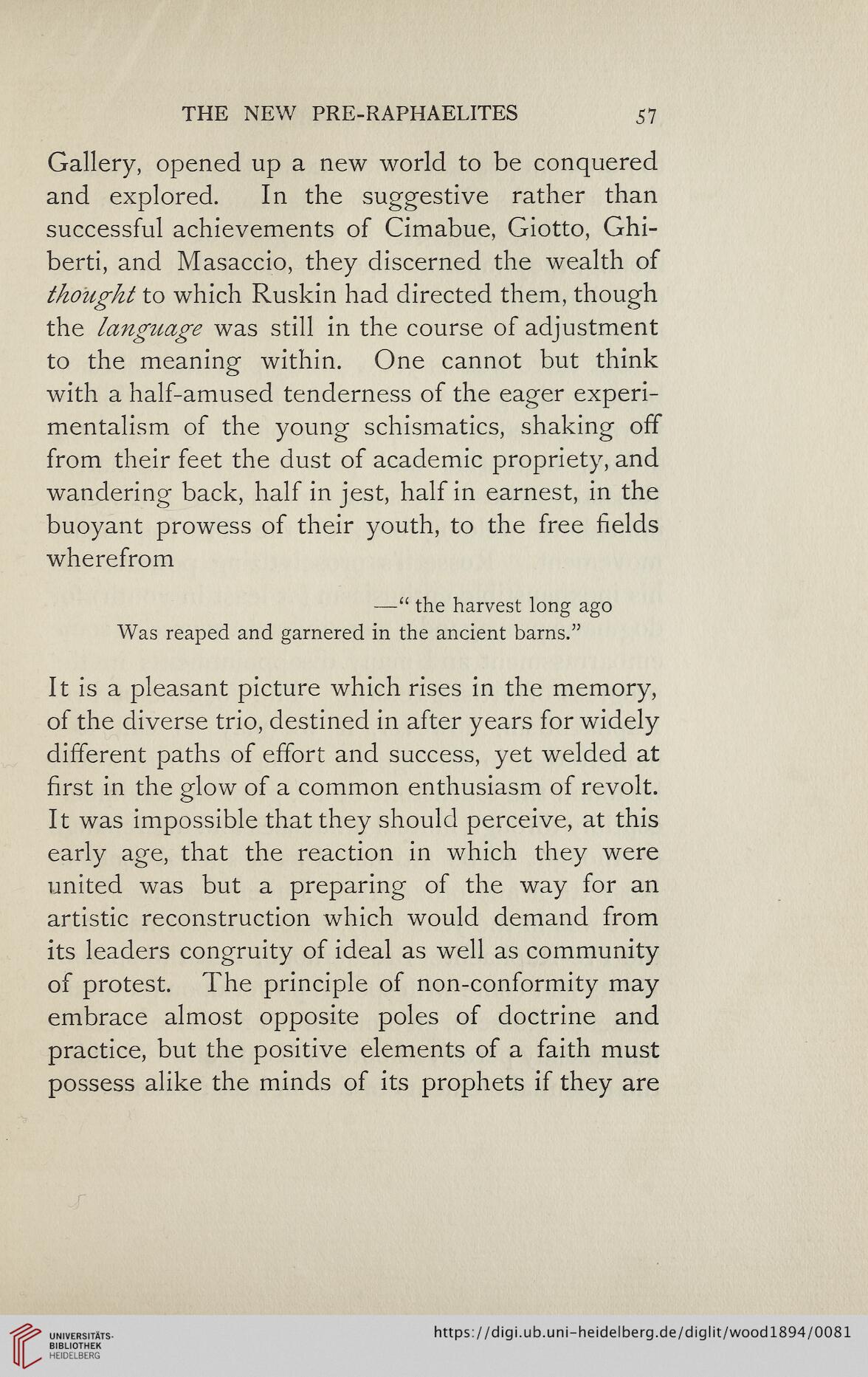THE NEW PRE-RAPHAELITES 57
Gallery, opened up a new world to be conquered
and explored. In the suggestive rather than
successful achievements of Cimabue, Giotto, Ghi-
berti, and Masaccio, they discerned the wealth of
thought to which Ruskin had directed them, though
the language was still in the course of adjustment
to the meaning within. One cannot but think
with a half-amused tenderness of the eager experi-
mentalism of the young schismatics, shaking off
from their feet the dust of academic propriety, and
wandering back, half in jest, half in earnest, in the
buoyant prowess of their youth, to the free fields
wherefrom
•—“ the harvest long ago
Was reaped and garnered in the ancient barns.”
It is a pleasant picture which rises in the memory,
of the diverse trio, destined in after years for widely
different paths of effort and success, yet welded at
first in the glow of a common enthusiasm of revolt.
It was impossible that they should perceive, at this
early age, that the reaction in which they were
united was but a preparing of the way for an
artistic reconstruction which would demand from
its leaders congruity of ideal as well as community
of protest. The principle of non-conformity may
embrace almost opposite poles of doctrine and
practice, but the positive elements of a faith must
possess alike the minds of its prophets if they are
Gallery, opened up a new world to be conquered
and explored. In the suggestive rather than
successful achievements of Cimabue, Giotto, Ghi-
berti, and Masaccio, they discerned the wealth of
thought to which Ruskin had directed them, though
the language was still in the course of adjustment
to the meaning within. One cannot but think
with a half-amused tenderness of the eager experi-
mentalism of the young schismatics, shaking off
from their feet the dust of academic propriety, and
wandering back, half in jest, half in earnest, in the
buoyant prowess of their youth, to the free fields
wherefrom
•—“ the harvest long ago
Was reaped and garnered in the ancient barns.”
It is a pleasant picture which rises in the memory,
of the diverse trio, destined in after years for widely
different paths of effort and success, yet welded at
first in the glow of a common enthusiasm of revolt.
It was impossible that they should perceive, at this
early age, that the reaction in which they were
united was but a preparing of the way for an
artistic reconstruction which would demand from
its leaders congruity of ideal as well as community
of protest. The principle of non-conformity may
embrace almost opposite poles of doctrine and
practice, but the positive elements of a faith must
possess alike the minds of its prophets if they are




